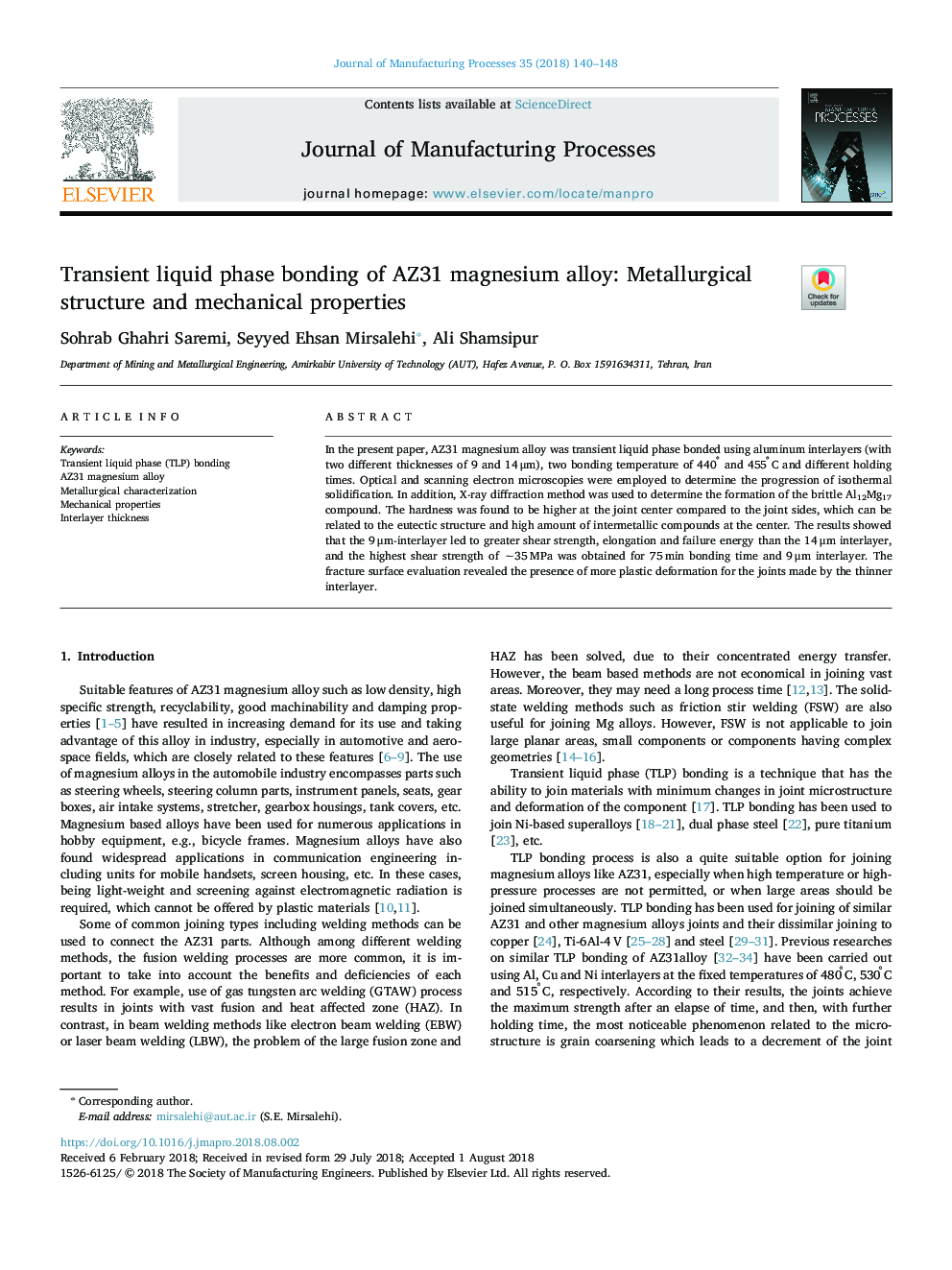| Article ID | Journal | Published Year | Pages | File Type |
|---|---|---|---|---|
| 8047813 | Journal of Manufacturing Processes | 2018 | 9 Pages |
Abstract
In the present paper, AZ31 magnesium alloy was transient liquid phase bonded using aluminum interlayers (with two different thicknesses of 9 and 14âμm), two bonding temperature of 440 Ì and 455 ÌC and different holding times. Optical and scanning electron microscopies were employed to determine the progression of isothermal solidification. In addition, X-ray diffraction method was used to determine the formation of the brittle Al12Mg17 compound. The hardness was found to be higher at the joint center compared to the joint sides, which can be related to the eutectic structure and high amount of intermetallic compounds at the center. The results showed that the 9âμm-interlayer led to greater shear strength, elongation and failure energy than the 14âμm interlayer, and the highest shear strength of â¼35âMPa was obtained for 75âmin bonding time and 9âμm interlayer. The fracture surface evaluation revealed the presence of more plastic deformation for the joints made by the thinner interlayer.
Keywords
Related Topics
Physical Sciences and Engineering
Engineering
Industrial and Manufacturing Engineering
Authors
Sohrab Ghahri Saremi, Seyyed Ehsan Mirsalehi, Ali Shamsipur,
